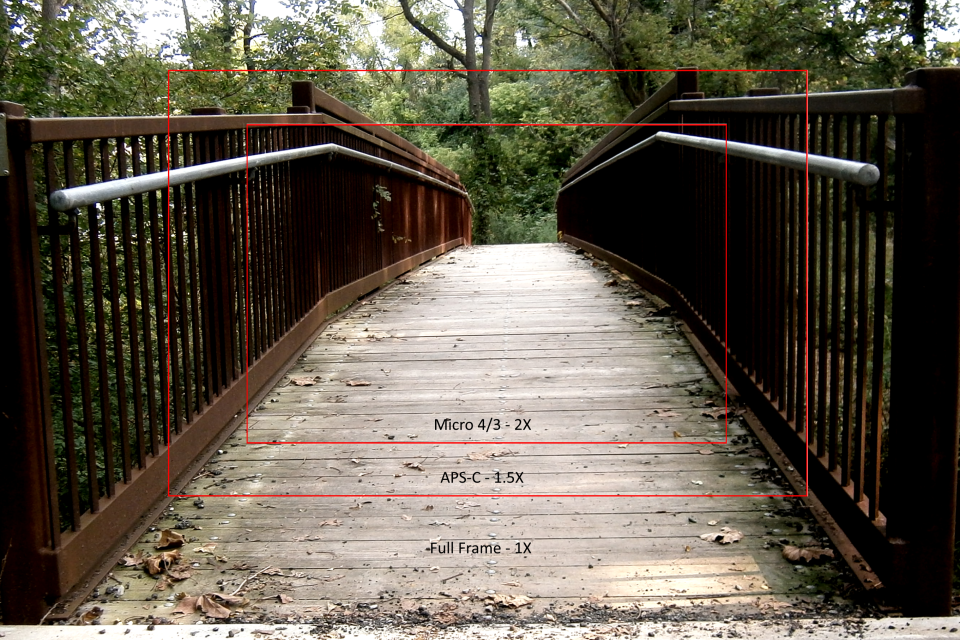Crop Factor
April 3,2021
What is the crop factor you encounter when looking to buy cameras and lenses? You will see categories such as medium format, 35mm full frame, APS-H, APS-C, Micro 4/3, CX, and numbers like 1, 1.5, 2, and others. The photographic industry uses crop factor to show the equivalent field of view (FOV) for a given lens with a given camera sensor size. The crop factor is determined by the size of the sensor in relation to a standard 35mm full frame sensor - about the same size as the original 35mm film camera image area.

Crop factor is a term that came about when newer digital cameras reduced the size of the sensor from the standard 35mm film size. At the time, they did this because of the expense of producing full frame digital sensors. To get the same photograph with two different cameras with different crop factors, the crop factor must be used to find the equivalent focal length lens and to adjust the f-stop. The focal length equivalence sets the FOV about the same. The f-stop adjustment is required to get an equivalent depth of field (DOF) and similar bokeh. Bokeh is the blur produced in the area of a photo that is not in focus.
For example, photographer #1 takes a photo using a full frame camera with a 50 mm lens and using an f-stop of 4. To take the same photo, photographer #2 using a Micro 4/3 camera (MFT) would need to use a 25mm lens and set their f-stop to 2. Since the f-stop was changed, photographer #2 would also need to either adjust the MFT’s shutter speed or ISO to get the proper exposure.
Full frame sensors measure about 36mm wide by 24mm tall with a diagonal of 43.27mm and this is assigned a crop factor of 1. Other crop factors are found by dividing the full frame diagonal (43.27mm) by the diagonal of the other sensor. A list of common crop factors and sensor sizes are listed in the table below.
